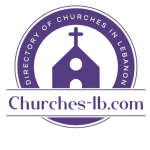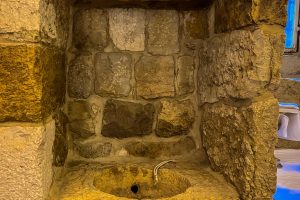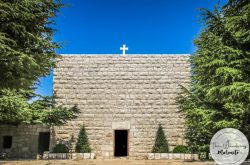Overview
Map
Other Details
دير مار روحانا البقيعة
Aaramoun Aaley
Aley
Mount Lebanon
دير مار روحانا البقيعة - عرمون سنة ١٧٠٣ جاء قرار بناء دير مار روحانا، وكان ديرًا مشتركًا للرهبان والعابدات، في موضع مدرسةٍ قديمة لتعليم الأحداث على اسم السيّدة. وسّعه البطريرك طوبيّا الخازن ليكون مقرًّا له خلال إقامته في كسروان. سنة ١٧٧٥ ترهّب في الدير قيس بن رامح الخازن وهو المطران جرمانوس الخازن رئيس أساقفة دمشق. في ٢٥ أيلول ١٨٢٦ فصل البطريرك يوسف حبيش الرهبان عن الدير. رُمّم الدير على عدّة مراحل آخرها سنة ٢٠١٦ حين كُرّس المذبح الجديد. الدير وقف بعناية آل زوين تحت ولاية البطريركيّة المارونيّة. The Monastery of St. Rouhana is located in Al Baqi'a - Aramoun. In 1703, a decision was made to build a joint monastery for monks and nuns on the site of an old school dedicated to the Virgin Mary. Patriarch Tobia El Khazen renovated it to use as his residence during his stay in Keserwan. On September 25, 1826, Patriarch Youssef Hobeish separated the monks from the monastery. The monastery underwent several stages of renovation, with the last one in 2016 when the new altar was consecrated. The monastery is under the jurisdiction of the Maronite Patriarchate and is entrusted to the care of the Zwein family.
Visited 3807 times, 2 Visits today
























Reviews are disabled, but trackbacks and pingbacks are open.